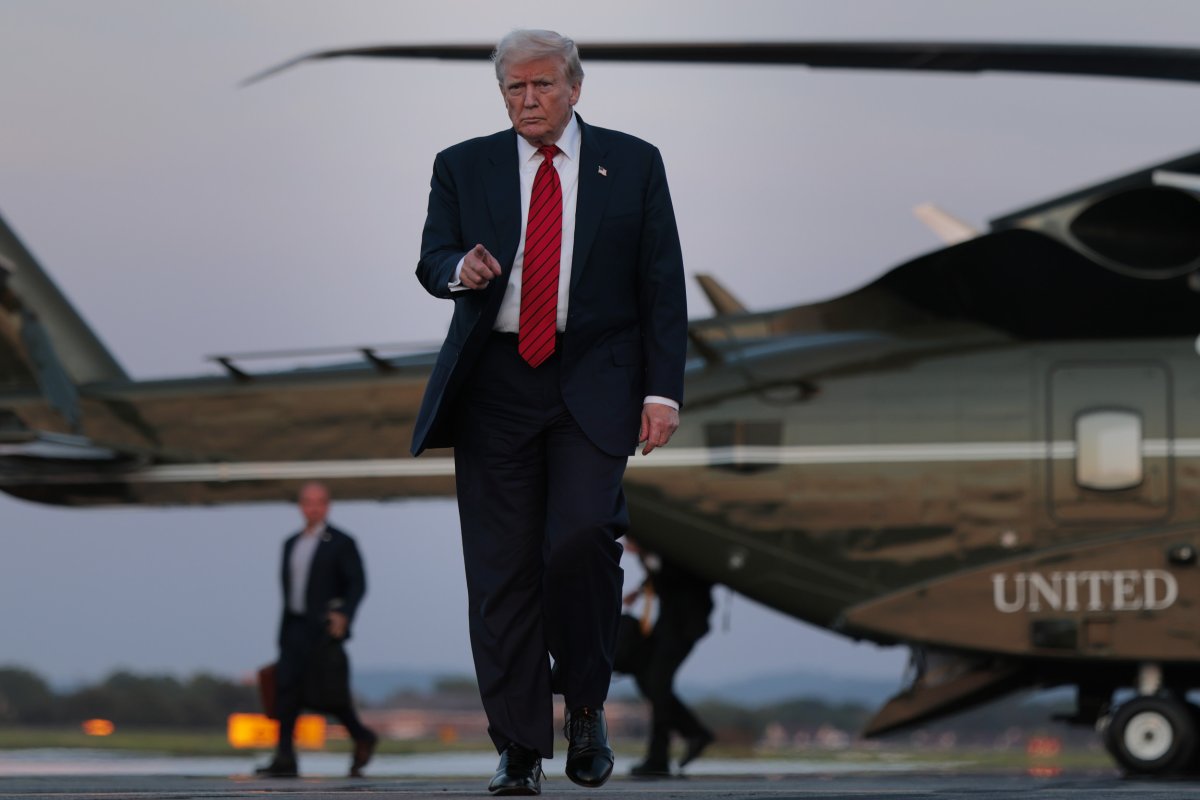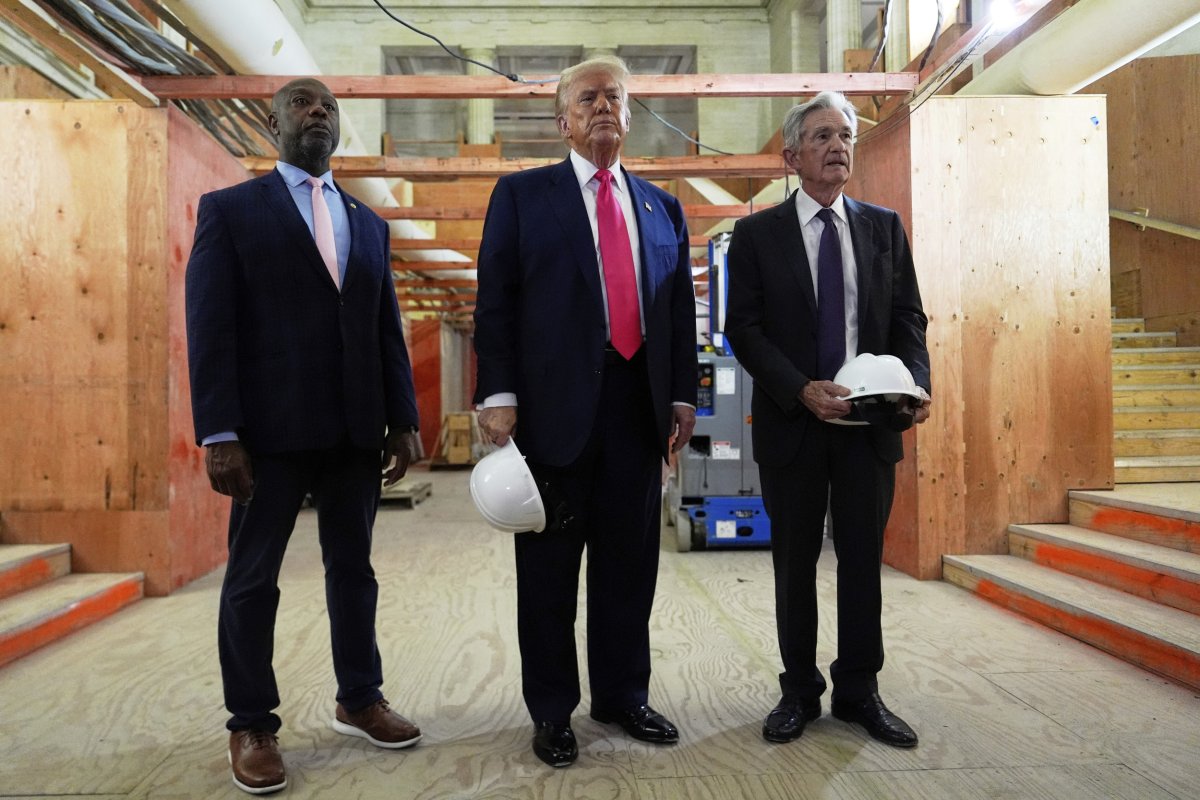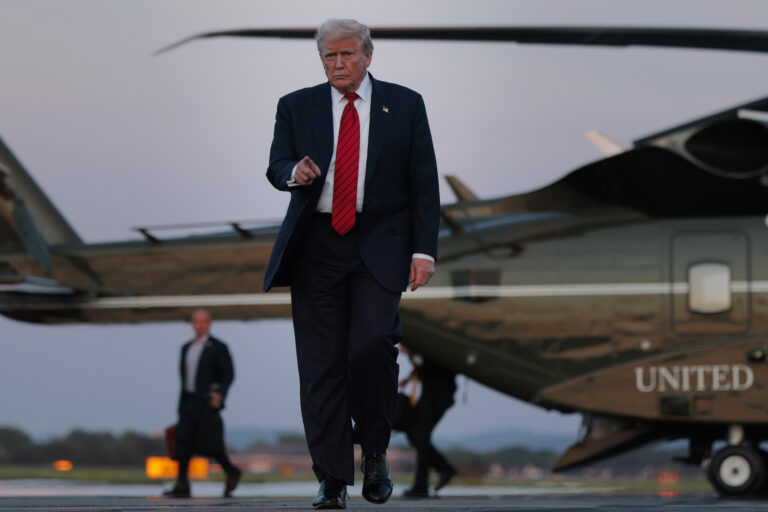Friday’s jobs report, which drew the ire of President Donald Trump and led to the firing of the country’s leading labor statistician, could ultimately prompt the Federal Reserve to deliver on one of his long-term goals: Cutting interest rates.
Since December, the central bank has remained in “wait and see” mode, guided by its mandate to manage still-elevated inflation with a cautious monetary stance, and until now encouraged in its approach by labor market conditions described as “solid” in the late July meeting.
But on Friday, Goldman Sachs Chief Economist Jan Hatzius said the weak jobs report made it “very, very likely” the Fed would begin cutting rates in September.
Why It Matters
Since the beginning of his second term, Trump has been amping up pressure on the Fed, primarily Chairman Jerome Powell, to cut rates, believing this will stimulate the economy while reducing the interest paid on government debt. This campaign has primarily consisted of personal insults against Powell following each meeting that ended without a cut.
More recently, Trump has expressed his desire to see Powell removed from the post before his term expires in May 2026.
What To Know
On Friday, the Bureau of Labor Statistics (BLS) released its report on nonfarm payroll employment in July, revealing that only 73,000 jobs were added in the month compared to the 110,000 analysts had penciled in.
Additionally, the bureau revised down figures from May and June by a total of 258,000 jobs, a substantial revision which led Trump to accuse it of manipulating data to reflect poorly on his administration, and to fire Commissioner of Labor Statistics Erika McEntarfer.

Anna Moneymaker/Getty Images
The White House defended the widely criticized move by claiming the revisions were too staggering to be believable. However, though it doubts the figures, these may finally push the Fed to fulfill a central Trump desire and cut rates for the first time since December.
Rate cuts are often used as a tool to boost employment, as these lower borrowing costs for businesses, encourage investment and ramp up consumer spending.
Friday’s report has clearly boosted investors’ optimism in this regard. Global stocks have started the week on a strong note, a rally Reuters attributed to increased expectations that the Fed may need to step in and support the U.S. economy.
According to Deutsche Bank researcher Jim Reid, cited by Fortune, the chances of a rate cut in September “surged to 87 percent on Friday, up from around 40 percent before the payroll data was released.”
Betting markets are following similar trends. The odds of a 25 basis-point cut have risen to 75 percent on both Kalshi and Polymarket from 39 and 35 percent, respectively. Meanwhile, on CME FedWatch, a market-based platform that calculates how traders are wagering on future Fed decisions, the probability has risen to over 90 percent.
Trump was asked during a Tuesday morning interview with CNBC, during which he described BLS data-gathering as “totally rigged,” whether he hoped Friday’s report would lead to this desired outcome.
“It’s not what I want. I don’t want that. I wanted it a year ago. I wanted it a long time ago,” Trump said. “Jay Powell is highly political. And I think, you know, I call him too late, Jerome. Too late. Powell. He’s too late. He’s too late. Always. He always has been.”

Julia Demaree Nikhinson/AP Photo
Job growth and low unemployment, which also increased in the BLS report, had been key reasons for the Fed holding off on cutting rates. The now-revised payroll jobs gains were cited by Powell in last Wednesday’s press conference, and listed among the signs of the “solid” labor market conditions that gave the Fed confidence in its cautious monetary stance.
As well as the upside risk to inflation posed by tariffs, Powell acknowledged “downside risks to the labor market,” adding that future data would “help inform our assessment of the balance of risks and the appropriate setting of the federal funds rate.”
But with inflation still elevated and above the long-term goal of two percent, the Fed now appears split in its dual responsibilities of maintaining stable prices and ensuring maximum employment.
Economist William Silber told Newsweek that cutting rates would be “tantamount to accepting a higher target rate of inflation—closer to three percent than two percent,” which he described as a “slippery slope.”
To Michael Pearce of Oxford Economics, the Fed may prioritize curbing inflation over propping up the labor market, leading it to hold off on a cut until December.
What People Are Saying
Michael Pearce, deputy chief U.S. economist at Oxford Economics, told Newsweek: “The Fed won’t change its mind based on one data point, but if we see the same pattern of a weakening job market in the August employment report and the next two inflation reports remain benign, a September cut would be firmly on the table.”
“The Fed’s job is made harder by the sharp decline in net migration, which is playing a key role in driving down job gains, but is a poor guide to how healthy labor market conditions are,” he added. “Officials will focus on the unemployment rate. That remains low, but officials are sensitive to any downside risk.”
Jeremy Siegel, a professor of finance at the University of Pennsylvania’s Wharton School of Business, told CNBC: “I definitely think there would have been, you know, a rate cut at the July meeting had we known the numbers were as weak as [they were].”
Economist William Silber told Newsweek: “The Fed is in trouble. It may have to cut in September despite the fact that the unemployment rate is still at full employment and the rate of inflation is well above the two percent target.”
David Doyle, head of Economics at Macquarie, in a note cited by Fortune, wrote: “While we don’t see significant further weakness in the labor market, the results of this report are likely to shift the FOMC’s assessment of the balance of risks to the outlook. While a September cut has become more likely, it is not a certainty. The eventual decision will hinge on incoming inflation and labor market developments.”
What Happens Next
The next Fed interest rate decision is due on September 17, following a meeting of the Federal Reserve Open Market Committee.
Trump said over the weekend that he would announce a replacement for McEntarfer in the coming days. Deputy Commissioner William Wiatrowski has taken over as acting commissioner in the interim.


